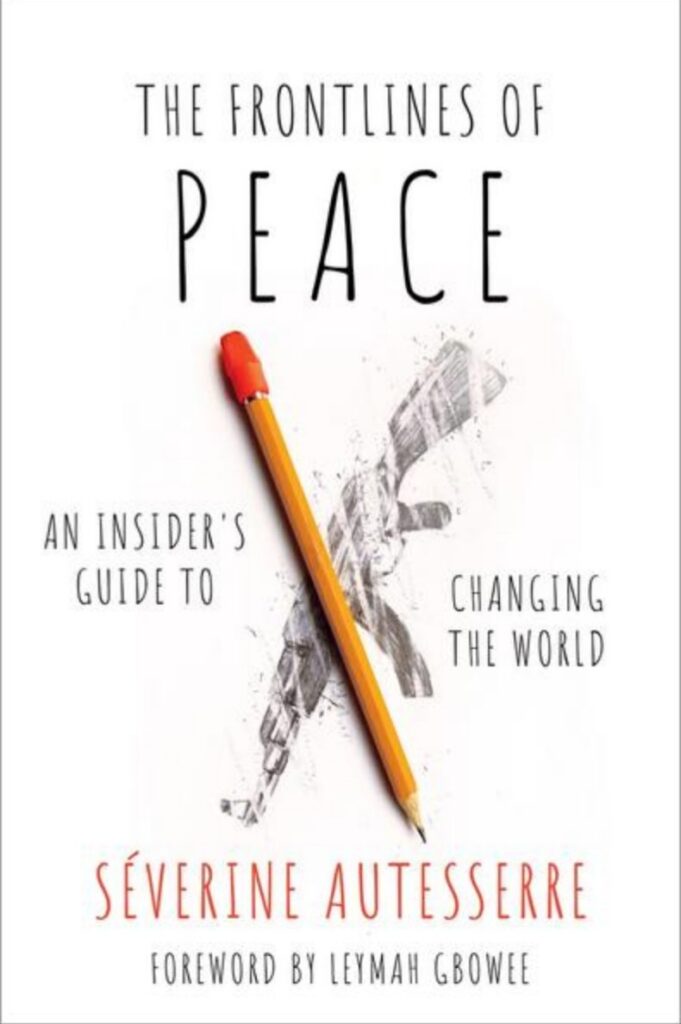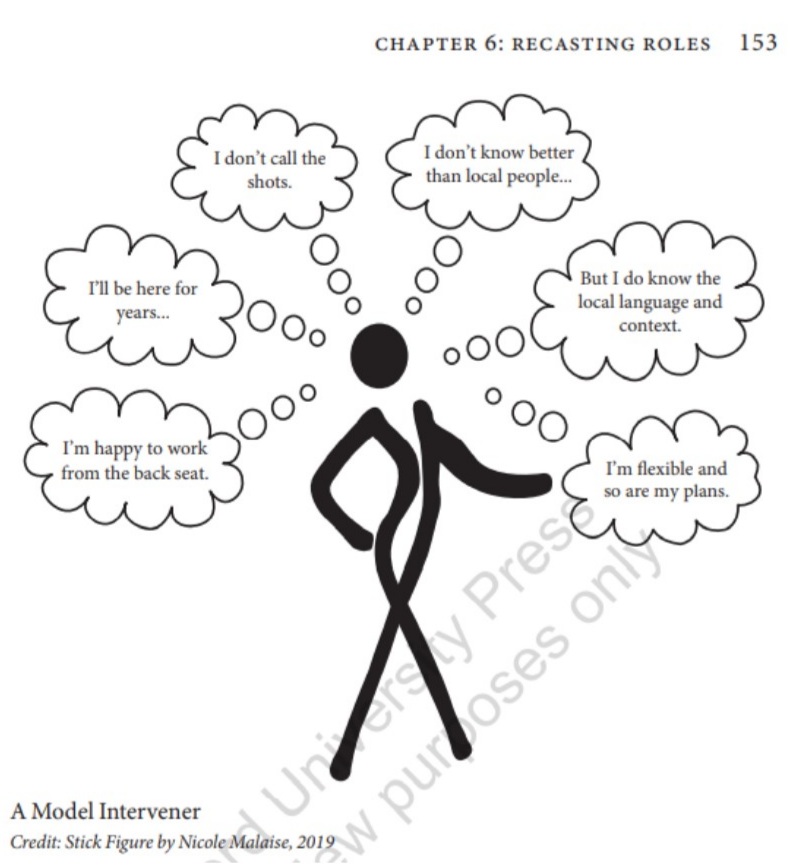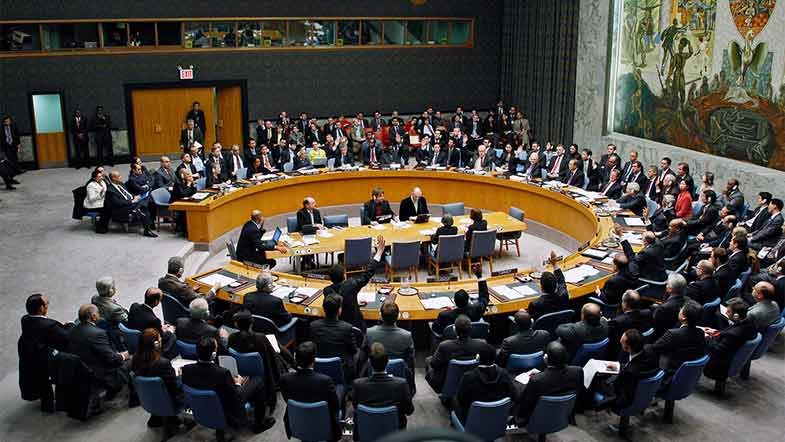Dr Burkhard Luber
In all the debates about the interventions of NGOs, supra-national organizations and UN agencies at international crisis hot spots a frequent question is: Why is the money spent and the work done in these interventions often misplaced and has not the desired effect and what can be done to make things better?
This question is in a nutshell the topic of the excellent recent publication:
Séverine Autessere: The Frontlines of Peace. An Insider’s Guide to Changing the World. Oxford University Press. 2021.

Motto of the author:
“I believe that the best way to understand anything is through immersion, so I´ve done a lot lot of what scholars call “participant observations”, meaning participating in the same phenomenon you´re researching”
(Page 5 of the book)
Efforts for non-violent conflict resolution run along two approaches in the current debate: The diplomatic political one, which tries to influence decision-makers in the sense of peace-promoting measures, and the numerous activities of NGOs on the grassroots level, “in the field” with involvement in the cities and villages affected by violence. It is to the great merit of Séverine Autesserre’s book to look at these two levels simultaneously, to present their respective problems and to check their chances of success. The biography of the author, professor at Columbia University in New York (Website: severineautesserre.com), recommends her in an impressive way: Autesserre has been active in numerous missions at international hot spots in over 20 years, especially in the RD Congo, in Kosovo, in Somalia, Colombia and the Middle East. There the author spoke to many people in the population, but also to NGO employees and UN staff. Her interest increasingly focused on two questions: What is going wrong in this world of peace-oriented missions, which Autesserre ironically dubbed “Peaceland Inc” and complementary: Where are examples of successful international peace work from which we can learn?

Autesserre writes in a gripping and exciting style, she takes readers with her to a variety of international hotspots. We get to know very different people there: the victims of violence, the actors in politics, the UN staff and the many NGOs that are active there. The author has a sharp eye, especially for the deficits of foreign interventions, no matter how well meant, for the sometimes ignorance and sometimes arrogance of the foreigners who work in the hot spots, for the sometimes bizarre bubble in which these interventionists live locally without getting a really competent look at the local problem. And – that makes the book particularly attractive – Autesserre writes extremely vividly about herself and her experiences in “Peaceland”, also about her fears and also presents her displeasure thoughtfully, what is going wrong in the international peace work community, where there is so much goodwill there. Her talent for storytelling combined with reflection is sometimes reminiscent of the project Kevin Sites’: In the Hot Zone: One Man, One Year, Twenty Wars. The modesty of the author, who is always aware of how privileged she is with her US passport, is pleasant to read, and she is free of any know-it-all attitude, an evil that is unfortunately often widespread in the peace work community.
What’s going wrong at “Peaceland Inc”? Many things according to Autesserre’s observations: ignorance, a lack of empathy, a know-it-all attitude, wealth, lack of local language skills, and arrogance of the UN / NGO actors. Structurally even more negative, however, is the “from top to bottom” approach of many international interventions, in which a lot of money is invested from outside in aid projects and where the local contact persons of the interventionists are fatally only the elites: presidents, governments, the leaders of the insurgents, state bureaucrats and intellectuals. The local residents on the grassroots level are mostly ignored.
Autesserre does not stop at unmasking these inadequate conditions, but also presents the reader with impressive positive counter examples, such as the convincing work of the Swedish Life and Peace Institute (LPI) or the impressive “Island of Peace” Idjwi (on Lake Kivu ), which in the midst of the constant civil war in the RD Congo has retained a status of committed nonviolent interaction and has also withstood various attempts by Congolese war lords to drag it into the country’s civil war. Autesserre attributes this to a committed, successful culture of non-violent conflict resolution by the residents of Idjwi, an attitude that she has observed also in other conflict zones around the world.
Chapter 2 of the book is entirely dedicated to the project work and methods of the LPI and this is not in the sense of a flawless success story, but Autesserre convincingly describes the ups and downs in the eventful history of the LPI, also the limits of its work and above all the moment, when LPI arrived at the insight: that it is an unsuccessful strategy of NGOs to promote the local peace process from outside. After recognizing this, LPI changed its working approach to a “Participatory Action Research” approach.
“The basic principles are simple: The LPI bases its actions on in-depth local expertise and rejects universal approaches to peacebuilding. It relies on local employees who are looked after by a few foreigners who often have extensive prior knowledge of the country. It does not implement programs directly; instead it works with and through a few handpicked local organizations whose main job is to support the local people. In this model, it is not foreigners based in capital cities and headquarters who conflict resolution conceive, conceptualize and implement initiatives. Instead, it is the intended beneficiaries and community members themselves – including the common people – who, with the help of local LPI partners and Congolese workers, are the arbiters of their own peace efforts. ” (p. 53)
Relentlessly, Autesserre reveals the deficits and counterproductive approach of Peaceland Inc: the low motivation of the interventionists to place themselves in the local situation appropriately or even to learn the local language, the top-down approach of the know-it-all foreign “helpers”, who live in a special territory, hermetically sealed from the local reality with barbed wire and sandbags, the arrogant belief “one size fits all ”, the unreflective view of having money, good external advice and flown-in foreign“ experts ” does everything which is necessary, regardless of the different geographical hot spots in the world. No wonder that the local population uses ironic terms for all this ineffective activity of the interventionists, such as: “Beach Keeping” (instead of “Peace Keeping”), “United Vacations” (instead of “United Nations”) or “Nothing Goes On” for “NGO ”. The blueprint of such external interventions is: Creating peace means reconciling the leaders of the antagonistic groups, as they are the guarantors to convince the population to end the violence, and to station the police and the military in the endangered regions. Autesserre lists the behavioral patterns of this intervention concept that she has exposed as “tyranny from above” (p. 103):
- Specialist knowledge is superior to local expertise
- Those who come from outside know better
- Local people are incompetent and do not deserve trust
- Action from the top downwards is essential
- More money for a program is always better than too little
- Peacebuilding is a short-term process of a few years
Besides referring the local culture of the “Island of Peace” Idjwi Autesserre presents “Somaliland” which went to independence from Somalia and is not recognized in the international community, but since its independence from Somalia in 1991 has created an amazingly stable, functioning peaceful state of its own, which has developed very differently from Somalia. Here in Somaliland, Autesserre sees the compelling alternative to the top-down approach of “Peaceland Inc”: a sharing of common values and economic interests in which traditional leaders, local elites and ordinary citizens are the actors. “It is not the Somaliland government, nor the armed soldiers, nor foreigners who are the guarantors of peace; they are the normal residents in the country” (quote from a university president in Hargeisa, the capital of Somaliland).
In the following chapters, Autesserre generalizes her examples from Idjwi, Somaliland and the work of the LPI by using the local population as the decisive basis for peace work and indicates that bottom-up approaches to peace work are at least as successful as top-down approaches, possibly even more successful (p. 148)

However, and this makes Autesserre’s argument particularly convincing, the author does not merely contrast the two approaches “From Above” versus “From below”, but advocates for a combination in which both approaches should be optimized to the maximum. This requires a role change on the part of those intervening from outside. For Autesserre, an ideal interventionist is one with the following convictions (p. 153):
Autesserre´s criticism of the common flaws of the top-down strategy in “Peace Land” is aptly and their arguments for a Game Change in the peace work at international hot spots is convincing when she argues for more involvement of local peacekeepers and a rejection of such interventions which are based on know-it-alls and a lot of money. Nevertheless, when the author focuses on the – in her opinion – two successful examples, Idjwi and Somaliland, some gaps remain:
In view of prominent violent conflicts such as in ex-Yugoslavia, Rwanda, Syria (others could also be named) the question arises: which violence prevention strategy would have been appropriate here or what can be learned from these conflicts? It is not the case that, for example, Croatians, Serbs and Bosnians lived in massive hostility to one another before the outbreak of the Balkan civil war. Many citizens there later commented quite stunned: We have always lived together as good neighbors, why could this disaster happen? It is not the place here to delve into this topic, but with reference to Autesserre´s book we should be aware that a “peaceful culture” is obviously not automatically sustainable, but can be corrupted by nationalism and violent separatism in times of crisis. So it would have been good if Autesserre had addressed the possible break points in apparently peaceful situations in more detail, for example investigating the question: How do countries successfully survive crises when their apparently peaceful situation is under stress? This blank space in the book is particularly surprising because Autesserre rightly refers to a number of examples where for relatively minor causes a violent escalation started. So if one takes the assassination in Sarajevo 1914 (strangely enough, however, this example is not found in this list by the author): How can one explain the fact that this event escalated to the First World War? It seems that in the beginning of the 20th century such a significant (structural) potential for conflict – and even violence – had accumulated in the nation states of Europe, so that such an individual murder could easily escalate into a European catastrophe. Arguing closer to the topic of Autesserre: Even in the argument of the author to improve conditions in Peaceland by giving more space to the experience and practice of local peace work, the question still remains of how this work can achieve such sustainability that it can withstand threatening external developments, regardless of the typical fields of peace education and training in non-violent conflict management. This would also have been a good place where Autesserre’s book could have addressed (external) conflict-escalating factors like the mineral exploitation in the RD Congo, the conflict-prone oil production in Nigeria or the intervention of NATO in its war of aggression against FR Yugoslavia.
Such minor deficits in no way diminish the impressive text of Autesserre. The author has produced a very convincing book, which is highly recommendable to be read by activists at international hotspots. Autessere does not speak from her isolated office, but the author is best legitimized through her many missions abroad to name the deficits and wrong turns of Peaceland and to advocate an urgently needed change in the conventional engagements of NGOs, international aid organizations and the UN. This gives Séverinne Autesserre’s criticism of Peaceland Inc. great weight. Required reading for everyone interested in a well-founded – critical as well as constructive – evaluation of international peace work.
When I read Autessere´s book a number of reflections came to my head especially that one can combine her approach with others like for example Matanock’s “Electing Peace” (Electing Peace – Social Science Matrix (berkeley.edu). And – on a very lower level than Autessere´s many international “journeys” to Peaceland areas – I was reminded of my own experiences which I had when working as director of the international foundation The Threshold where a major work focus was for me to be continuously on the ground where our local partners were: in Eastern Slavonia during the UNTAES mission there and also often with local partners in Shkodra, North Albania before, during and after the NATO-war against the FRY.
And I remember how frequently and with how much concern I was confronted personally with the observations Autessere shares in her book. However I think – perhaps I was lucky to have been chosen as a NGO person just during this intervention mission – what I learned in the UNTAES period and area was a – I dare to say – good mix of top down and bottom up. I met there perhaps not “model” interveners like in Autessere´s picture on p. 153 but at least persons who had a sense of the concerns the author raises.

